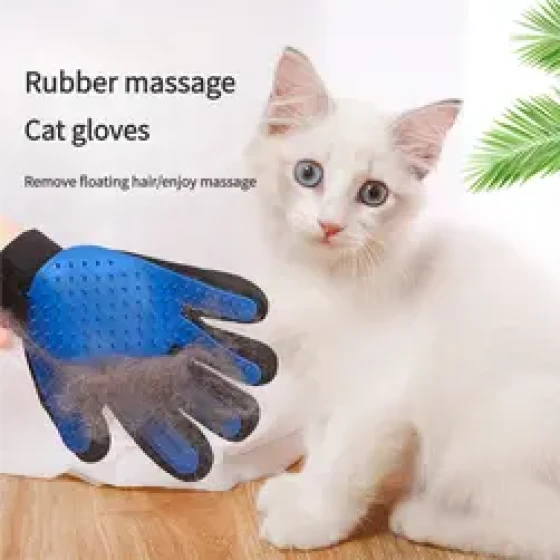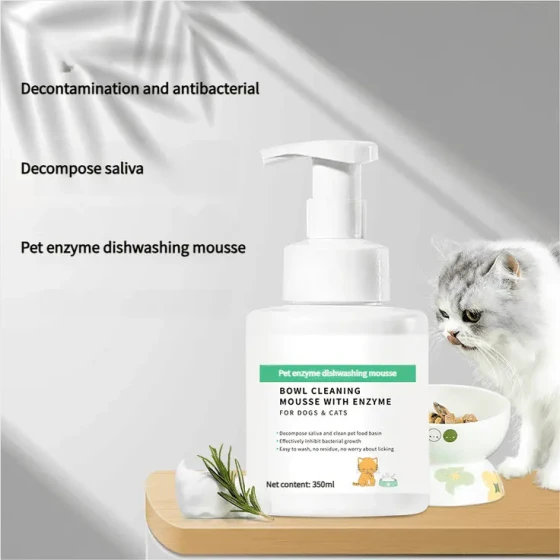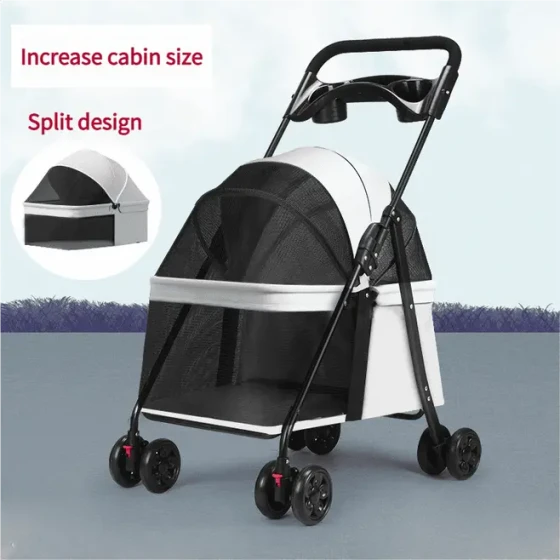Pet Cat Unboxing_Newbie Cat Raising Essential Unboxing Guide
Congratulations on about to welcome a furry new family member! “Pet Cat Unboxing,” a phrase that sounds a bit like opening a delivered package, actually represents the whole process of preparing a new home for your cat, helping it smoothly transition from a strange environment to a warm harbor. Being fully prepared—from food, clothing, living arrangements to psychological readiness—can help your kitten quickly adapt and start a happy “cat life,” and you can truly enjoy the joy of being a qualified “pooper scooper.”
Welcoming a New Companion: The Complete Guide to Pet Cat “Unboxing”

Imagine your carefully arranged home is about to welcome a “four-legged guest” who is curious yet somewhat uneasy about everything as it arrives. The so-called “pet cat unboxing” refers to preparing a safe, comfortable, and loving living environment before bringing the cat home, and guiding you on how to help it through its initial adaptation period. It’s not just about preparing a few items; it’s a “major test” about love, patience, and responsibility.
Step 1: Before the Cat Arrives, You Need to “Set the Stage”
There is a saying, “Before the troops move, the supplies go first.” Make sure to prepare all the essentials in advance and conduct a “safety inspection” at home to ensure everything is perfectly safe before your kitten steps in.
1. The Essential “Seven-piece Set” — The Newbie Pooper Scooper’s “Martial Arts Manual”:
- Cat Food and Feeding Utensils:
- Cat Food: If possible, try to learn about the brand and type of food your cat ate before and keep it consistent initially to avoid stomach upset caused by a sudden change of food. There are many cat food brands on the market; it's advised to select a reputable, clearly formulated complete cat food. For kittens, choose kitten-specific food to meet their rapid growth needs.
- Feeding Bowls and Water Bowls: It’s best to choose stainless steel, ceramic, or glass materials that are easy to clean and do not easily breed bacteria. Avoid plastic as some cats may be allergic, causing “black chin” syndrome. Water bowls are preferable to be wide with shallow bottoms for easy drinking; you can even consider a circulating water fountain to encourage your cat to drink more.
- Cat Litter and Litter Box:
- Litter Box: Select a litter box of appropriate size, generally about 1.5 times the length of the cat’s body. Open litter boxes provide better ventilation and cats tend to prefer them; closed or semi-closed boxes better control odors but require frequent cleaning. It’s recommended to prepare at least one litter box per cat—or the number of cats plus one, if multiple cats are present.
- Litter: Common options include bentonite clay litter, tofu litter, wood pellet litter, etc. Bentonite has good water absorption and clumps tightly; tofu litter is flushable and eco-friendly; wood pellet litter has good deodorizing effects. Choose according to your cat's preferences and your cleaning habits.
- Scratching Board / Cat Climbing Frame:
- This is a “magic tool” to protect your furniture! Cats naturally scratch to sharpen their claws. Without suitable tools, your sofa and carpet may suffer. Scratching boards can be made of corrugated paper or sisal rope and placed where cats frequently move or sleep. Climbing frames provide multi-level space, satisfying climbing and jumping instincts and act as “lookout points” for territory monitoring.
- Cat Bed / Resting Area:
- Providing a dedicated and safe resting area is crucial. It can be a closed cat bed for security or an open soft cushion placed in a sunny spot. Initially, it's recommended to set the bed in a quiet, low-disturbance corner.
- Cat Carrier / Travel Box:
- This is essential for taking your cat out (e.g., vet visits). Choose a sturdy, breathable, appropriately sized carrier or travel box. Prepare it before your cat arrives and let your cat get familiar with this “little house” to reduce stress during outings.
- Toys:
- Teasing sticks, laser pointers, small balls, catnip toys, etc., are great helpers for building your bond, helping your cat release energy and stay lively. Proper play benefits your cat’s physical and emotional health.
- Brush and Nail Clippers:
- Regular grooming reduces shedding, prevents hairballs, and enhances interaction with your cat. Nail clippers are necessary for regular trimming to prevent scratches or furniture damage.
2. Home Safety “Thorough Check”:
- Keep Dangerous Items Out of Reach: Remove all items harmful to cats such as medicines, cleaning agents, pesticides, toxic plants (lilies are highly toxic, be sure to remove!), sharp objects, fragile items, etc.
- Secure Easily Tipped Items: Fix bookshelves, TVs, vases, or other items that might be knocked down by cats during play to prevent accidents.
- Wire Protection: Wrap exposed wires to prevent your cat from chewing and electric shock.
- Window Protection: Install screens or protective nets to prevent accidental falls. Many pet-specific anti-fall nets on the market are safe and aesthetic.
- Small Item Storage: Don’t underestimate small objects like hair clips, rubber bands, needles, earplugs, etc., which your cat might accidentally swallow causing digestive problems.
Step 2: Cat “Unboxing”: The First Intimate Contact
When your cat finally arrives home, you will probably be as excited as holding a little bunny in your heart. But remember, at the first meeting, you are the “owner” and should give it enough respect and space.
1. Smooth Arrival:
- Quiet Welcome: After arriving with the cat carrier, place it in a quiet, moderately lit room, avoiding noisy environments and crowds.
- Gradual Introduction: Open the carrier door, but don’t rush to take out the cat. Let it explore on its own and come out naturally when ready. It may first peek and observe carefully, then cautiously take the first step. Just like when you visit a friend’s unfamiliar home, you’d want to check your surroundings first.
2. Dedicated “Safe Room”:
- Set Up Isolation Area: It’s best to prepare a separate room as a “safe house” with its food, water, litter box, bed, and some toys. This offers a private, stress-free space for your cat to adapt to the new environment.
- Progressive Exploration: Let your cat stay in this room for a few days to familiarize with the scent and surroundings. When it feels safe and relaxed, gradually open other rooms for it to explore the whole house.
Step 3: Settling In: The First Few Days
Cats usually take a few days to weeks to adapt to a new environment, during which you need to show extra patience and observation.
1. Feeding and Drinking:
- Familiar Food: Cats may lose appetite or refuse to eat due to stress. Offer familiar food or small meals multiple times. Always keep fresh water available.
- Monitor Elimination: Watch your cat’s bathroom habits to ensure it can use the litter box normally. Pay attention to diarrhea, constipation, or lack of defecation and seek help if needed.
2. Interaction and Play:
- Patient Companionship: Don’t forcibly hold your cat at first; let it approach you voluntarily. Sit nearby and speak softly or offer treats to build trust slowly.
- Gentle Touch: When relaxed, try lightly touching its cheek or chin with the back of your hand. If accepted, continue gentle stroking. Watch for signs of discomfort and stop immediately if the cat resists.
- Play to Release Energy: Appropriate play helps reduce stress and builds your bond. Use interactive toys like teaser wands but avoid over-stimulation.
3. “Ice-breaking Journey” for Multi-cat Households:
- Isolation and Observation: If you have other pets already, isolate the new cat initially. Let them sniff each other through the door to get familiar gradually.
- Gradual Introduction: After isolation, allow short, supervised meetings and gradually increase time until they fully acclimate. This process requires patience; don’t rush.
Step 4: Health First: Laying a Good “Cat Life” Foundation
Cat health is the cornerstone of a happy “cat life.” After adoption or purchase, take your cat for a comprehensive vet checkup promptly.
1. First Veterinary Examination:
- Full Checkup: The vet will examine eyes, ears, teeth, skin, coat, weight, heart, and lung function to assess overall health.
- Vaccinations: Based on age and health, the vet will schedule appropriate vaccinations (such as trivalent vaccine, rabies vaccine) to prevent common infectious diseases.
- Parasite Control: Check and treat internal and external parasites accordingly.
- Spay/Neuter Consultation: For cats of suitable age, vets will recommend spaying/neutering. This not only avoids unwanted litters but reduces risks of reproductive diseases and improves behavioral issues.
2. Daily Health Monitoring:
- Diet Changes: Monitor appetite and water intake.
- Bathroom Habits: Check litter box daily for abnormal stool or urine color, shape, or odor.
- Energy Levels: Healthy cats are usually lively and active. Watch for lethargy, excessive sleeping, hiding, or lack of activity.
- Warning Signs: Vomiting, diarrhea, sneezing, nasal discharge, coughing, limping, itching, hair loss, etc., require vet attention.
Step 5: Long-term Companionship: Become a “Pooper Scooper” Expert
Raising a cat is more than providing food and shelter; it’s a long-term commitment and responsibility.
1. Regular Feeding and Nutrition:
- Scheduled Feeding: Establish regular feeding times to avoid obesity from free-feeding.
- Balanced Diet: Ensure complete nutrition through quality cat food, optionally supplemented with wet food for hydration.
- Moderate Treats: Treats are rewards, not meal replacements, and choose cat-specific treats with portion control.
2. Daily Grooming:
- Regular Brushing: Especially for long-haired cats, daily brushing reduces shedding and hairballs.
- Claw Trimming: Trim nails every 2-4 weeks to prevent overgrowth.
- Ear Cleaning: Regularly check ears and clean with pet ear cleaner if dirty.
- Oral Care: Start tooth brushing early or use oral hygiene products regularly to prevent tartar and dental disease.
3. Mental Enrichment and Behavior Guidance:
- Enrich Environment: Provide plenty of toys, scratching posts, and climbing frames. Rotate toys regularly to maintain novelty.
- Interactive Play: Spend time daily playing with your cat to maintain its mental and emotional well-being.
- Positive Guidance: Use rewards to train good behavior, like sprinkling catnip on scratching posts to encourage use instead of furniture.
- Emotional Awareness: Cats have emotions too; watch their moods and understand their needs.
4. Financial Planning:
Raising a cat is a long-term investment. Besides initial “unboxing” expenses, recurring costs include cat food, litter, treats, toys, vaccinations, deworming, checkups, neutering, and potential medical bills. New cat owners should prepare psychologically. Typically, monthly costs range from several hundred to over a thousand RMB, depending on food quality, health care frequency, and toy/treat expenses. Like raising a child, it requires time and money but the happiness and companionship are priceless.
Frequently Asked Questions
Q1: What if my cat hides and won’t come out after arriving home?
A1: This is a very normal stress response. Don’t forcibly pull it out; give it time to adjust. Place food, water, and litter box where it’s easy to find, and keep the environment quiet. You can speak softly or sit far away reading so it feels your presence without pressure. Usually, it will relax after a few days.
Q2: What if my new cat refuses to eat or drink?
A2: First rule out illness; if it refuses food and water for a long time or shows other symptoms, see a vet immediately. If it’s mild stress, try offering familiar food or tasty wet food, cat treats, etc. Maintain a quiet environment and avoid disturbance.
Q3: My cat always meows; is it unhappy?
A3: Cats meow for many reasons: hunger, thirst, wanting to play or be petted, or just “talking” with you. It may also indicate discomfort, loneliness, or stress. Combine other behaviors and context to judge. If persistent with abnormalities, consult a vet.
Q4: Does my cat shed a lot? How should I deal with it?
A4: Cats do shed, especially in molting seasons (spring and autumn). This is normal. Daily grooming with a professional pet comb reduces shedding and prevents hairballs. Feeding hairball remedies or fiber-rich food also helps.
Q5: When should I vaccinate and neuter my cat?
A5: Kittens typically get their first vaccine around 8 weeks old, then subsequent vaccines per vet advice. Neutering is usually done after sexual maturity: about 6-8 months for males and 6-12 months for females, depending on individual condition and vet recommendations.
Summary
“Pet cat unboxing” is the first step to starting a new life with your cat. It’s not only about material preparation but emotional investment and responsibility. From the moment you welcome it, you become the most important support in its life. With patience, love, and care, you’ll find that raising a cat is more enjoyable than you imagined. Watching it nap, cuddle, and play beside you brings warmth and healing, making all effort worthwhile. After all, “cat cuddling” feels great momentarily, but it’s even better forever, isn’t it? May you and your new companion have happy and wonderful days together in each other’s company!





